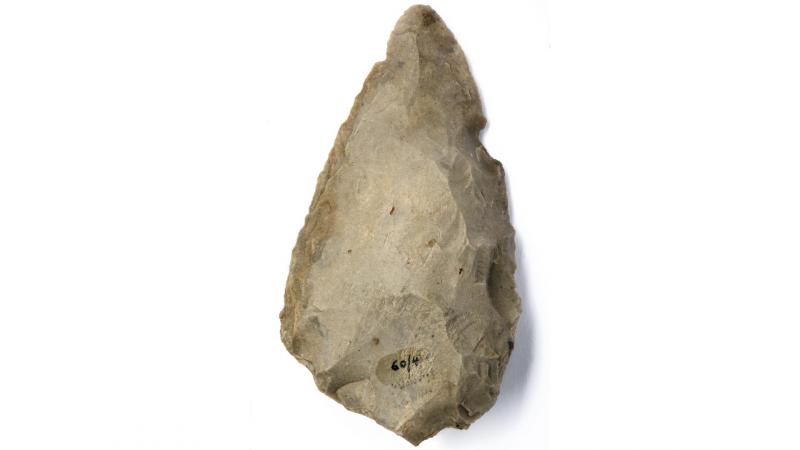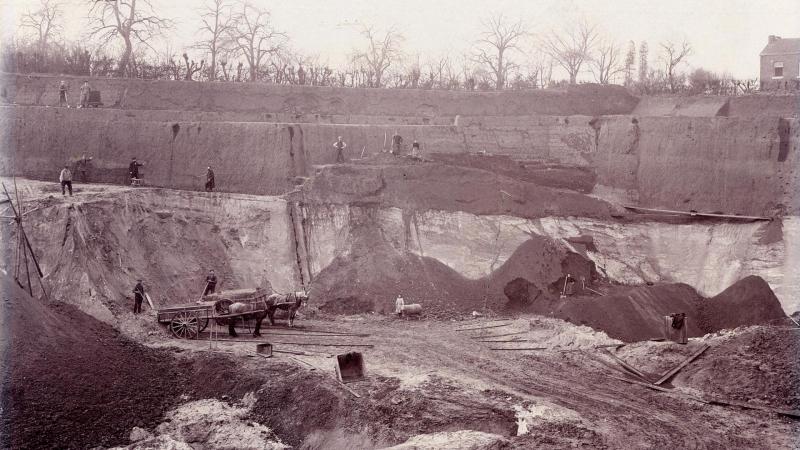Great archaeological discoveries often occur by chance. Coming to Liège on 22 September 1911 to see the hesbayen loam, the French geologist Victor Commont (1866–1918) did not expect to discover prehistoric flint chips in a sandpit in the Sainte-Walburge district! The day after his discovery, he informed the pre-historian Marcel de Puydt, who visited the site on All Saints’ Day. At the base of the silt which rested on the sand, he discovered a layer of pebbles with cut flints. These two scientists had just discovered, in the hills of Liège, a vast prehistoric open-air deposit that was 110,000 years old!
In order to reach the sand layers, workers had to remove the mixed layers of soil and loam that covered them.
Without knowing it, from March 1905 on – the date when exploitation of the quarry began – they irreparably destroyed a major Middle Paleolithic archaeological site. This is because, at the time of the archaeological discovery, three quarters of the sand had already been exploited!


